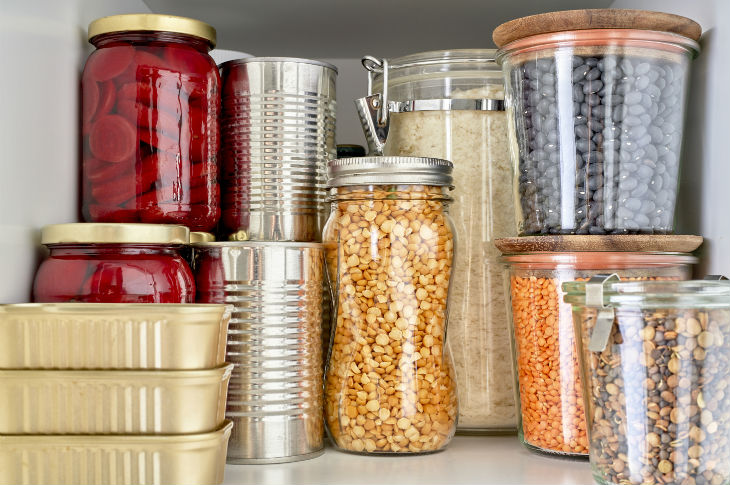
What you eat plays a huge role in your health and immunity. But when trips to the supermarket are few and far between, preparing healthy, fresh meals may seem like a challenge. So if you’re wondering what to buy for your pantry to ensure you continue to eat healthy over the next few months, we’ve got you covered.
The list below is adapted from the Food “Lifeboat” study, conducted in 2007 by a team of Australian researchers at Nutrition Research Australia, which sought to build a pantry list with goals of affordability, palatability, requiring no refrigeration, and meeting macro- and micronutrient needs for 10 weeks. The study also included a trial-and-error process of nutrition modeling, like seeing what happens to vitamin C levels when there is a lack of fresh fruit and vegetables. And as a result, Dr. Flavia Fayet-Moore, CEO at Nutrition Research Australia recommends a good multivitamin and mineral supplement when access to fresh fruit and veggies becomes limited.
Our adapted list assumes you have access to a fridge and freezer, so includes some perishable items with longer shelf lives like potatoes, carrots, and apples. These items are listed at the top of each list, so just be sure to eat these first.
Pantry Staples to Keep You Healthy
Vegetables
Carrots
Sturdy leafy greens like cabbage, kale, Swiss chard
Garlic
Onion
Frozen vegetables like broccoli, cauliflower, spinach, peas, or mixed
Tomato paste
Sun-dried tomatoes
Powdered soup mixes
Seaweed, dried
Carrot juice
Fruit
Apples
Frozen fruit like berries or mango
Fruit pouches like apple sauce
Dried fruit like raisins and apricots
Orange juice
Healthy Carbs
Root vegetables like sweet potatoes, potatoes, squash
Whole-wheat flour
Whole-grain cereal like old-fashioned oatmeal, Cream of Wheat, Cheerios, or Weetbix
Whole popcorn kernels
Pasta
Brown rice, quinoa, barley, or farro
Instant mashed potato or dehydrated potato flakes
Whole-wheat or corn tortillas
Whole-wheat crackers
Corn kernels, canned
Protein Foods
Frozen chicken breasts or thighs, fish, shrimp, or lean meat
Eggs
Long-life/Shelf-stable milk or milk powder (or soy protein powder)
Canned tuna, salmon pouches, or sardines
SPAM or beef jerky
or beef jerky
Dried or canned legumes like lentils, kidney beans, chickpeas
Green peas, canned
Three bean mix, canned
Baked beans in tomato sauce
Healthy Fats
Frozen avocado
Extra virgin olive oil or canola oil
Nuts and seeds, like almonds, walnuts, flaxseeds, or chia seeds
Extras
Sauces like sweet chili, reduced-sodium soy, hot sauce, dijon mustard
Dried spices like garlic, mixed herbs, onion powder
Honey or pure maple syrup
Chocolate
Herbal tea like green or lemon & ginger
Coffee
During this time, your overall nutrition goals are the same—eat regular meals with one to two snacks, at each meal aim to build a balanced plate of nutrient-dense, minimally processed foods (half veggies or fruit, a quarter protein foods, and a quarter healthy carbs), and drink lots of water. Remember, you’re likely to be less active, so eat mindfully by listening to your body and try to find healthy, non-eating ways to manage your stress like meditating, stretching, or calling a friend. And Fayet-Moore suggests, “Try a family recipe challenge to see who can come up with the tastiest dish using just a few simple ingredients from the list. And look at this period as a great time to eat more meals together for family bonding.”
Here are a few recipes for inspiration:
Stuffed Sweet Potatoes with Beans & Greens
Cabbage Pad Thai with Grilled Shrimp
The post Your Essential Guide to Pantry Staples appeared first on Fitbit Blog.
source https://blog.fitbit.com/pantry-staples/
No comments:
Post a Comment